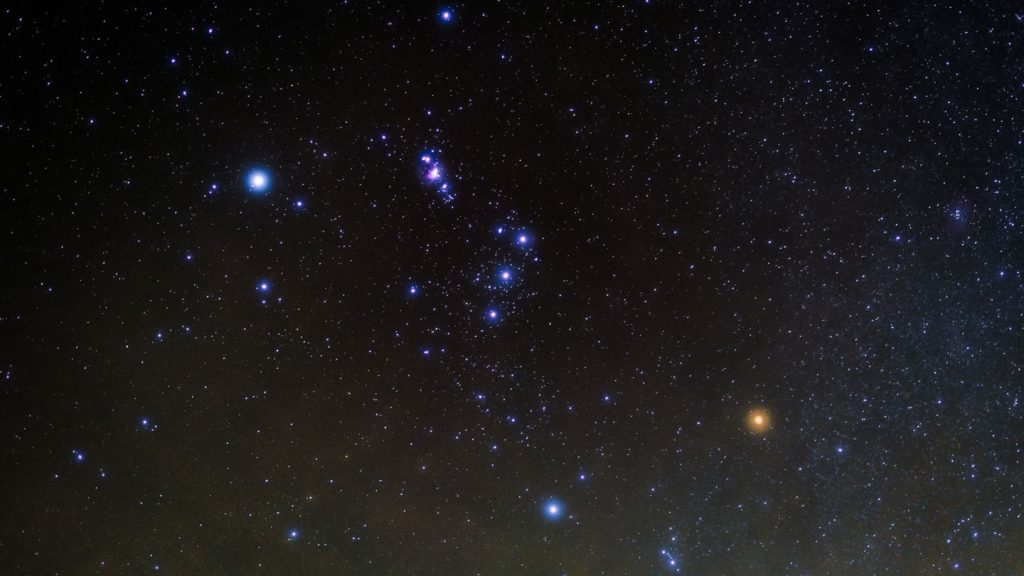Two independent studies have found evidence of a potential companion star orbiting Betelgeuse, a red supergiant. The first study, conducted by Morgan MacLeod of the Harvard & Smithsonian Center for Astrophysics, linked a six-year cycle of Betelgeuse brightening and dimming to a companion star tweaking its orbit, with global, historical measurements dating back to 1896. The second study, led by Jared Goldberg of the Flatiron Institute in New York, analyzed the last 20 years of measurements of Betelgeuse’s motion on the sky, also finding evidence of a companion star interacting with Betelgeuse.
Astronomer Henry Cozier Plummer first suggested in 1908 that Betelgeuse’s light variation on a six-year cycle could be due to the gravity of a companion star tugging the red supergiant back and forth. Over the years, astronomers have discovered that Betelgeuse has a complex behavior, with its outer atmosphere boiling like a pot of water, pulsating in and out on a 400-day cycle, and occasionally sending bursts of material into space. This complexity made the idea of a companion star fall out of fashion until a resurgence of interest in Betelgeuse led to further investigations.
MacLeod’s team demonstrated that the six-year cycle in Betelgeuse’s brightness is real and stable over centuries, suggesting the presence of a companion star. The companion star has been estimated to be about 0.6 times the mass of the sun and orbits Betelgeuse every 2,110 days at a distance slightly more than twice Betelgeuse’s radius. Goldberg’s data also supports the presence of a companion star that orbits every 2,170 days and has a mass about 1.2 times that of the sun.
While the discovery of a companion star to Betelgeuse is exciting and could have implications for our understanding of red supergiants, it may be challenging to test or confirm due to the nature of the system. Betelgeuse’s companion is ultimately doomed, as its orbit is shrinking due to Betelgeuse stealing its angular momentum. In approximately 10,000 years, Betelgeuse is predicted to swallow its companion star entirely, highlighting the dynamic and intricate interactions within stellar systems.


